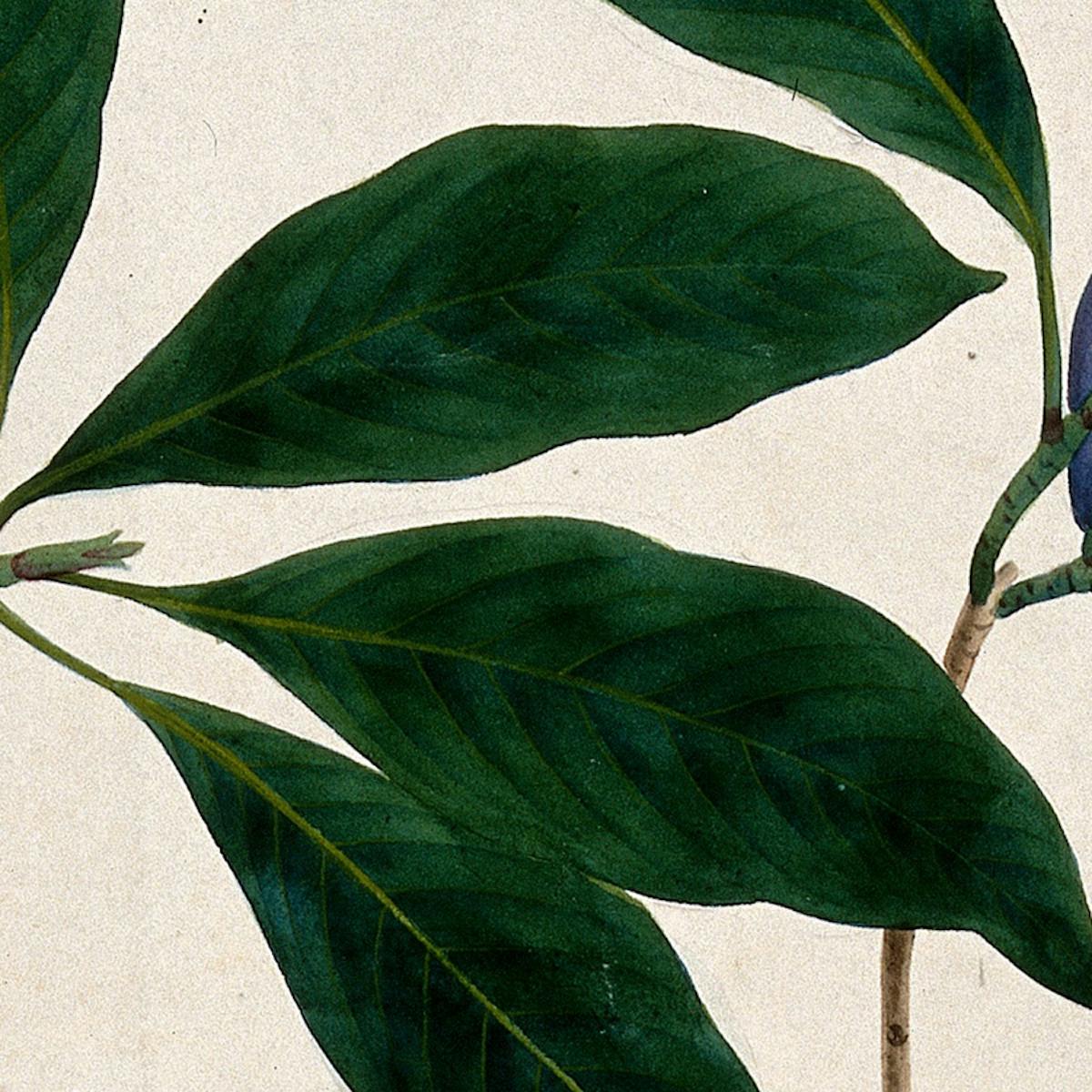Sweet, warm, woody: cloves taste and smell like Christmas. They’re a staple of many culinary spice mixes, including garam masala, five spice and ras-el-hanout, while their potent oil has antiseptic and pain-relieving properties.
Cloves are a must-have ingredient if you’re planning to make mulled wine from scratch this year. And if you’re thinking of creating your own tree decorations, you could consider studding an orange with cloves to make a sweet-smelling pomander. But there is, of course, a lot more to this pungent spice than boozy punch and baubles.

Cloves are the dried flower buds of the evergreen clove tree.
The spice that you can now so easily buy in the supermarket is the dried flower bud of the clove tree. The tree is an evergreen that naturally occurs in the Maluku Islands (also known as the ‘Spice Islands’) in easternmost Indonesia.
In Spice, The History of Temptation, Jack Turner describes these tiny volcanic islands as looking like “a row of emerald witches’ hats set down on the ocean”. He explains that, “At the start of the 16th century and for millennia beforehand they were the source of each and every clove consumed on earth.”
This coloured lithograph from 1842 shows the flowering branch of a clove tree.
Shaped a bit like a nail or a pushpin, the diminutive dried buds became a commodity prized and fought over by land-grabbing empire builders.
In the early 1500s, Spanish and Portuguese ships invaded the Maluku Islands, and Portugal went on to monopolise the global clove trade for decades. Holland coveted the cloves, there was a series of bloody wars, and eventually the Dutch pushed the Portuguese out, although the English continued to battle them for control.
All this warmongering was considered worth it because people were willing to pay extortionate prices for spices, which were valued for both their taste and their medicinal powers. In Tree Medicine, Peter Conway reports that Samuel Pepys handed over a sack of gold in 1665 in exchange for a small pouch of nutmeg and cloves, spices that had been claimed to cure disease and increase virility.
This illustration from 1808 not only shows the flowering and fruiting branch of a clove tree, but also includes a parasitic worm.
But cloves were being traded for use in food and medicine long before invading imperialists forcibly took over.
According to Spices in Indian Life by S N Mahindru, the ‘Charaka Samhita’ (a core Indian medical text dating from between the ninth and sixth centuries BCE) has this to say about cloves: “Spices such as cloves and cardamom should be wrapped in betel leaves with betel nuts and chewed after meals to increase saliva and aid digestion. All fetid odours shall disappear as the breath becomes fragrant.”
Mahindru also says that cloves are a component of an Ayurvedic aphrodisiac preparation called Chandrodaya Makaradhwaja, and that strong-smelling clove oil can be used to discourage clothes moths, and relieve aching teeth as well as freshen foul breath.
Clove oil’s particular tang comes from a compound called eugenol, an antiseptic and anti-inflammatory chemical that is also numbing and pain relieving. So, next time you have toothache (perhaps after drinking too much sugary mulled wine), you could try gently chewing on a clove. The eugenol it releases may well help ease your ache before you get to the dentist.
If you enjoyed this article, you might also like Ayurvedic Man: Encounters with Indian medicine, at Wellcome Collection until 8 April 2018.
About the author
Helen Babbs
Helen is a Digital Editor for Wellcome Collection.



